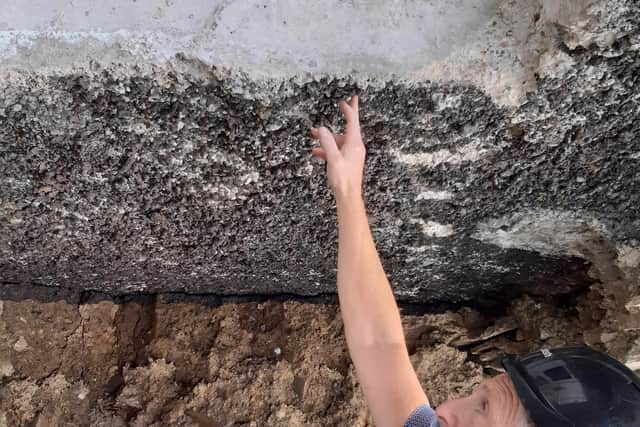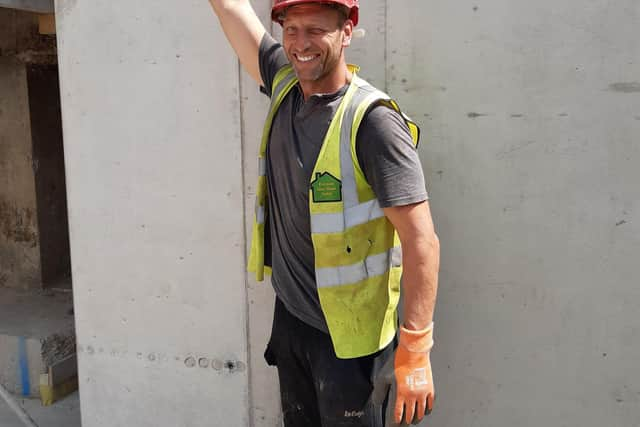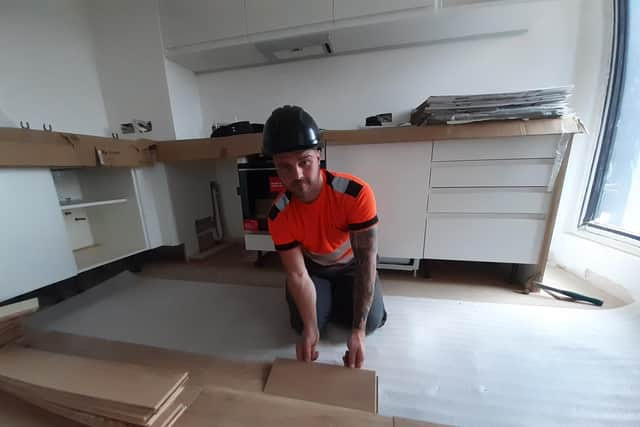Restorations - Will Sheffield learn to really love Park Hill again?
and live on Freeview channel 276
Too big, too ugly and too dangerous due to high levels of crime.
So bringing the 998 apartments back into use is as much about restoring a reputation as its famously brutal - and listed - concrete.
Advertisement
Hide AdAdvertisement
Hide AdWhen opened in 1961 the huge complex was welcomed for offering modern housing in a revolutionary setting.


But following a well documented decline, dilapidation and then disuse, can they ever be loved in the same way again?
Owner and developer Urban Splash is spending millions revamping 195 flats in phase 2 of a multi-year programme.
Senior construction manager Harvey Milddleton remembers the old Park Hill quite clearly.
Advertisement
Hide AdAdvertisement
Hide AdHe said: “I grew up in Sheffield, I knew the horror stories, the bad reputation, the four pubs and gang warfare. For a long time my view was negative, through ignorance”


After working on site for seven years he’s learned to love it, even the concrete, despite being a bricklayer by trade.
“It’s 60 years old and in the main it’s worn well. It’s a building crying out for love and attention and to be repaired - it’s now part of Sheffield’s heritage.”
If it is true that fondness for buildings comes with age, Park Hill could be close to achieving that status. The fact it is a survivor adds to its historical allure.
Advertisement
Hide AdAdvertisement
Hide AdKelvin Flats, a sprawling social housing complex in Upperthorpe, were from the same era. Flattened in 1995, they are largely unlamented.


Today, thanks to Park Hill’s Grade II listing the renovations – employing 120 builders - are sticking to its original character. Brightly coloured panels used in phase 1, so visible from the city centre, are not being used again.
Original brick is being retained, creating an oddly low-key contrast with its neighbour.
Meanwhile, the famous concrete has required 5,000 repairs, from patches to structural work. And as part of the listing, English Heritage wants to see the wood grain from pine panels used in ‘casting’ new sections.
Advertisement
Hide AdAdvertisement
Hide AdOther legacies of the 1960s are not so welcome. Asbestos was used in floor tiles, wall coverings, pipes and lagging. And sound transference through concrete floors was a big problem.


Today’s modern flats have sound insulation and all important fibre-broadband. But they won't feature the district heating system connected to the nearby Veolia incincerator used in phase 1. The heating in phase 2 will be all-electric.
Developed by Urban Splash jointly with Places for People, some 170 phase 2 flats been sold since sales opened in February last year.
A month later, in March 2020, Sheffield City Council unveiled a £1.5bn plan for the redevelopment of the Sheaf Valley.
Advertisement
Hide AdAdvertisement
Hide AdIt included a proposal to move the dual carriageway on Sheaf Street to the route of the existing tram tracks running behind Midland Station - and below the windows of Park Hill. It would also have destroyed South Street Park, a slim strip of nature which acts as a buffer between the flats and the city.
But the threat of disruption receded when the idea was axed by new council leader Terry Fox earlier this month.
Meanwhile, a currently empty block facing Duke Street, phase 4, will be tackled within the next five years, Harvey said.


Inside, you can still see 60 years of decorating trends, including polystyrene, wallpaper and artex. Also visible are the white painted front door steps left by proud occupiers long gone.
Advertisement
Hide AdAdvertisement
Hide AdAs part of the restorations job, Urban Splash removed the famous ‘I Love You Will U Marry Me’ graffiti that was on one of the bridges earlier this year.
The company has vowed to bring it back, although critics point out it won’t be the original but a modern version. And perhaps that is the best symbol of what Park Hill flats has become.
In celebrating 60 years of Park Hill last month, Coun Fox said: “Park Hill is one of Sheffield’s most iconic and talked about areas, rich in local history, telling the stories of Sheffield’s past while housing the promise of its future. 60 years after being built, the area is once again a thriving, active community but now has the added vibrancy of regular cultural events, a contemporary café overlooking the city, independent businesses, and is the home of S1 Artspace showcasing a host of talent and attracting visitors from all over.
“The ongoing regeneration of this area, in partnership with Urban Splash and Places for People, has made it one of the most desirable places in Sheffield to live, work and relax.”
Advertisement
Hide AdAdvertisement
Hide AdGreg Ball, senior development manager, added: “This is a significant project for us and carries with it a huge responsibility to the people of Sheffield. Our redevelopment of this world renowned Grade ll brutalist structure has endeavoured to provide contemporary and sustainable homes that respects the original design and is accessible to everyone, delivered truly unique workspace for commercial occupiers and first class public realm that all can enjoy. This could not have been achieved without the collaboration and support of our partners particularly Sheffield City Council.
“Residents and occupiers create their own communities and we liaise closely with the growing population at Park Hill to support events and activities that encourage all generations to mix. We are proud that Park Hill has come alive again and is a place that the city is proud of - also that it is seen as an integral part of the city centre.
“60 years of Park Hill is worth celebrating and it is a marker to pause and reflect on a colourful history, an exciting present and to look forward to a brighter future.”